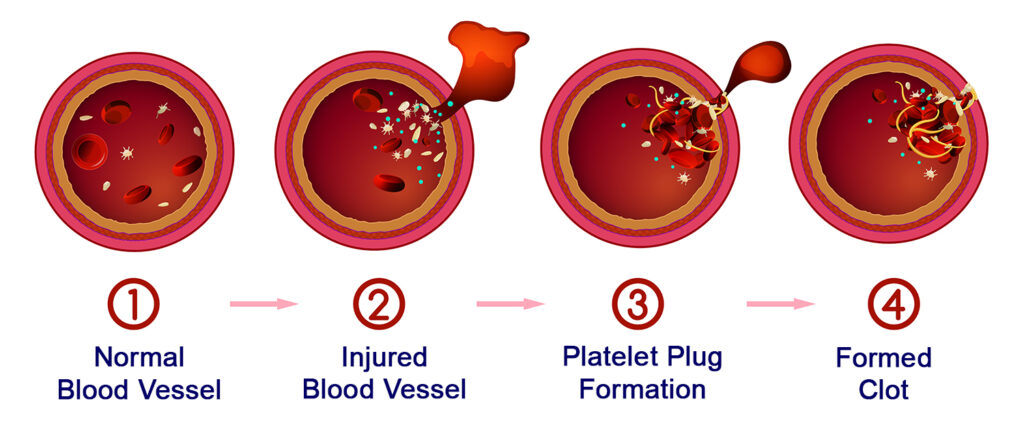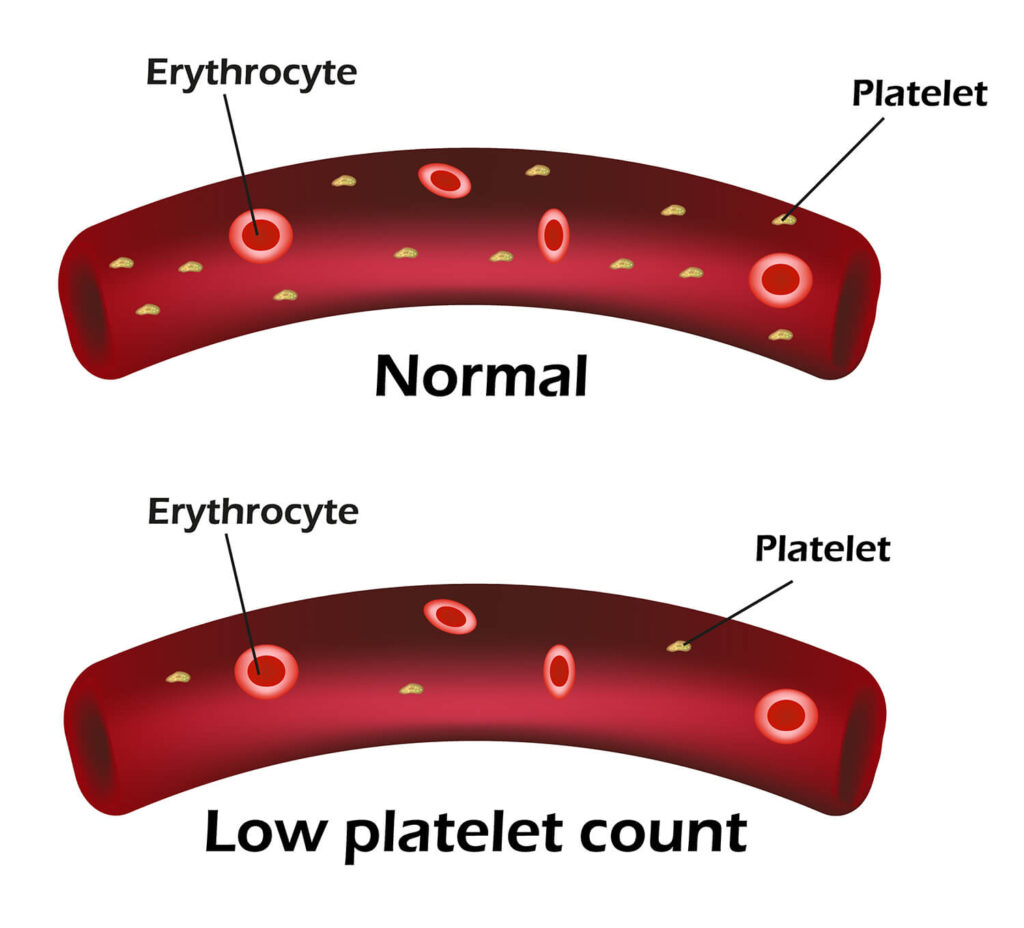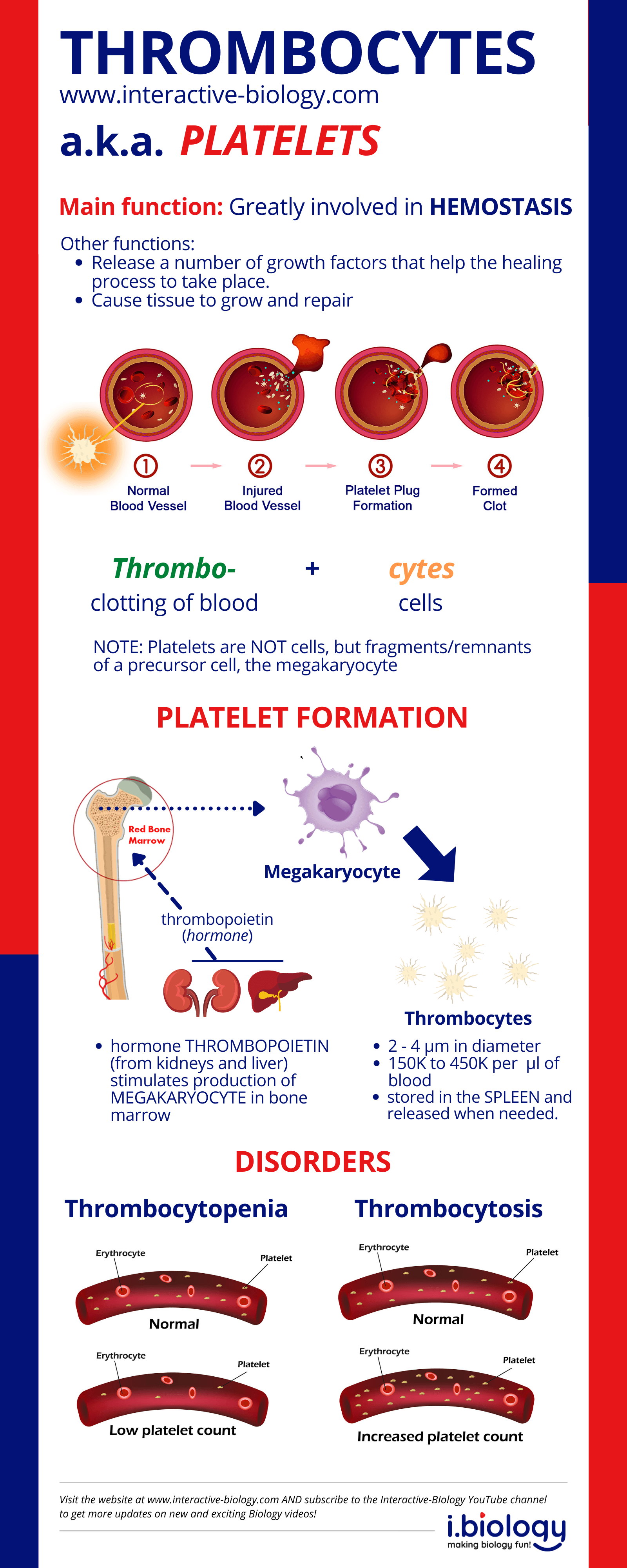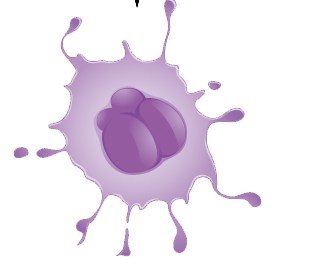Thrombocytes – also known as platelets. They are involved in blood clotting and wound healing. But what exactly are they and how do they do what they do?
Topic outline:
Role of Platelets in Blood Clotting: Hemostasis
You get a cut and you start bleeding. Fortunately for you, it doesn’t go on forever.
Depending on the size of the cut, you may see that within a few seconds or maybe a few, the blood stops flowing. This is great. You don’t want to just go on bleeding and bleeding. Then you could get anemia – and that’s not fun.
This stopping of the flow of blood is called hemostasis. And platelets, also known as thrombocytes, are a very important part of this process.

“Thrombocytes” — a Misnomer
First off, let’s address a misnomer.
I’ve referred to these structures as thrombocytes and while that is a correct name, it gives you the wrong impression.
You see, the prefix thrombo– refers to the clotting of blood. That makes sense. But the suffix -cytes refers to cells.
And that’s where the misnomer part comes in.
While these are involved with blood clotting, they aren’t technically cells. Instead, they are fragments of a specific type of cell.
How Platelets are Formed
In my earlier video, when I spoke about how blood is formed (or hemopoiesis), we learned about the Megakaryocyte.
This is a specific type of cell that develops in the bone marrow as a result of the release of a hormone called thrombopoietin, which is released by the kidneys and the liver.
Once the megakaryocyte matures, it grows these extensions on its surface. These extensions will extend through the walls of the capillaries in the bone marrow and then pieces of these extensions will break off.
These pieces are made up of small bits of cytoplasm surrounded by little pieces of the membrane of the cell. And these broken-off pieces are the platelets – the thrombocytes.
Platelet (Thrombocyte) Structure
They are pretty small, about 2 – 4 micrometers in diameter and we typically will have anywhere from 150K to 450K per microliter of blood.
Now that’s a lot. I mean it’s not like the 5 million red blood cells in that same amount of blood, but it’s way more the white blood cells, which would be like 5,000 – 10,000.

So, once we have these platelets in the blood, they are basically circulating via the blood vessels. About a 1/3 of them go to the spleen and they just get stored there until there’s a need.
Whenever there’s some kind of damage to a blood vessel, which would be what causes bleeding, these platelets get activated, they go to the site of damage and they plug things up to stop the flow of blood. As I mentioned earlier, that process is called hemostasis and we’ll go more deeply into that topic in the next video.
Now that’s not the only thing they do.
Other Functions of Platelets (Thrombocytes)
They will also release a number of growth factors and these growth factors help the healing process to take place. They cause tissue to grow and repair, especially connective tissue. Of course, you want the flow of blood to stop, but you also want healing to take place and the thrombocytes help with that as well.
Before we finish, I want to talk about some issues that can arrive with platelets.
Platelet Disorders
Thrombocytopenia
If a person’s platelet count is low, that’s called thrombocytopenia. And as you would expect, if that’s the case, that person is less likely to form clots and you get excessive bleeding when there’s some kind of damage or injury.

Thrombocytosis
On the other side, if there are too many platelets, that’s called thrombocytosis. That’s a problem because that can cause excessive clotting. That can lead to having clots in your blood vessels that obstruct the flow of blood, it can lead to heart attack, and stroke.

As we’ve said in so many of our videos, it’s all about balance. Platelets are important, they serve important functions in the healing process, and in order for those functions to happen the right way, we need to have the right balance.
Now in the next video, we’re going to go deeper into this process of hemostasis. I’ll see you over there.
Infographic


